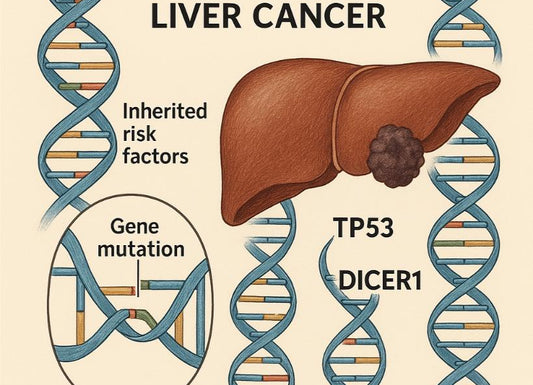UTI Symptoms Men: What It Is, Causes, Diagnosis, Treatment, and Prevention
 Written By
Jaclyn P. Leyson-Azuela, RMT, MD, MPH
Written By
Jaclyn P. Leyson-Azuela, RMT, MD, MPH

When we talk about urinary tract infection, the first that comes to mind is almost always females. But, urinary tract infections (UTIs) occur even in men, particularly when harmful bacteria enter and multiply in the urinary tract.
UTIs affect around 12% of men in their lifetime, with the risk increasing after they reach the age 50. The reason why it is fairly uncommon in men is that the male anatomy offers some sort of natural protection against the condition with longer urethra and antibacterial properties of the prostatic fluid.
Key Takeaways
-
Men with UTIs usually experience a burning sensation during urination with frequent urges to pee, and may present with cloudy or bloody urine.
-
Male UTIs often signify that there is an underlying issue, such as prostate problems or urinary tract abnormalities that require medical attention.
-
E. coli is often the most common bacterial culprit of more than 90% of UTIs in men.
-
The standard treatment is antibiotics.
-
Some risk factors include being more than 50 years old, enlarged prostate, using catheters, and underlying conditions like diabetes.
What is Urinary Tract Infection (UTI)?
Urinary tract infection happens when bacteria gets into your urinary system. These are bad germs that grow and multiply, causing pain as well as other problems within the system.
What is the Urinary Tract?

The urinary tract in men includes the urethra, bladder, ureters, and kidneys. Men have longer urethra compared to women, which is about eight inches in length. The male urethra runs through the prostate gland and penis. This longer path makes it harder for bacteria to travel up to the bladder. The prostate also makes a fluid that helps fight off bacteria (antibacterial properties).
How does a UTI Affect the Body?
When bacteria like E. coli enter into your urinary system, they cause infection since this system is originally aseptic (meaning it is free from contamination). This bacteria causes more than 90% of all UTI, which sticks to the wall of the urinary tract and multiplies quickly. Your body tries to fight off the infection leading to inflammation, which is responsible for the pain or burning sensation that you feel. The infection can also cause your urine to appear cloudy or even bloody.
Can Men Get UTIs?
Yes. While it is common in women, men can get it too. By the age of 85, about 1 in 3 men will experience at least one incident of UTI.
Why are UTIs Less Common in Men?
As discussed earlier, men get fewer UTIs because of their body design (anatomy). They have longer urethra (the tube where urine passes), which makes it harder for bacteria to travel up to the bladder.
What are the Risk Factors for Men?

Some factors make UTIs more likely to occur in men, including:
-
Being more than 50 years old
-
Prostate issues, like benign prostatic hyperplasia (BPH — enlarged prostate)
-
Catheterization (a device used to help you urinate)
-
Underlying conditions like diabetes
-
Weak immune system
-
Engaging in anal sex with no protection
-
Poor hygiene
Studies show that men who have diabetes are more likely to experience UTIs than those who don’t. Additionally, about 35% of men with enlarged prostate will suffer from UTI at one point in their lifetime.
What Are the UTI Symptoms Men?
Urinary tract infection symptoms in men can be mild or severe. But, the most common signs include the following:
-
Burning sensation when urinating
-
Frequency (having the urge to urinate more often even when not much urine comes out)
-
Urgency (strong urge to pee that can’t wait)
-
Cloudy, dark, or strange-smelling urine
-
Blood in the urine (may appear pink, red, or even cola-colored)
-
Feeling tired
-
Low grade fever (less than 101°F)
Data shows that 75% of men with UTIs experience burning sensation when they are urinating and about 20% of them report having blood in their urine.
Do All Men Experience the Same Symptoms?
No, UTI symptoms men can vary from one man to another. Your age, overall well-being, and where the infection is located can change how it feels. Some men exhibit all the symptoms, while others may only have one or two. For people who have a strong immune system, the symptoms may be milder. However, those who have diabetes may not notice the symptoms at all until the infection is worse. This is often called asymptomatic bacteriuria.
Are there symptoms specific to older men?

Yes, older men, particularly those who are suffering from prostate issues, may manifest different symptoms of UTI, such as but not limited to:
-
Slow or weak urine stream
-
Trouble in starting to pee
-
Feeling like you can’t empty your bladder completely
-
Dribbling after peeing
-
Getting up too frequently at night to pee
-
Confusion or even behavior changes (seen particularly in very elderly men)
These symptoms can happen because of an enlarged prostate that can block the flow or urine, which makes symptoms of a urinary tract infection in men even worse. Remember the path of the urethra? It passes through the prostate, which means that if the prostate enlarges, it can easily obstruct this tube. Prostate enlargement occurs in about 50% of men over the age of 50.
Can UTIs be asymptomatic in Men?
Yes, some men can have a “silent” (asymptomatic) UTI, which does not manifest any symptom. This kind of infection is more common in men who are suffering from chronic prostatitis (long-term prostate infection). About 20% of men with this condition can have bacteria in their urine but will not feel any symptom at all. However, even though these men don’t have symptoms, the infection can still cause problems if left untreated.
What Causes UTIs in Men?
UTI in men (and women) are almost always caused by the bacteria E. coli, which occurs in about 90% of all urinary tract infections. However, other germs implicated include Proteus, Klebsiella, and Enterococcus. These bacteria are not naturally found in the urinary system, which causes the infection.
How do Bacteria enter the Urinary Tract in Men?
There are several ways that bacteria can enter the male urinary tract:
-
Through the urethral opening at the tip of the penis
-
From the rectum to the urethra (particularly in unprotected anal sex)
-
From another infection site in the body via the bloodstream
-
From using catheters or medical instruments inserted in the urethra
Because of men’s longer urethra and unique body design, they are better protected from UTI than women, which explains why men should have fewer incidences of UTI in their lifetime.
Can Sexual Activity Lead to UTIs in Men?
Yes, sexual activity can sometimes lead to UTIs in men though much less common than in women. It can happen when bacteria passes from the rectum to the urethra for men who engage in anal sex — studies show that men who engage in this activity have a higher chance to get UTI and friction during sex can push bacteria back to the urethra, where it does not naturally belong.
How are UTIs Diagnosed in Men?
Since UTIs are less common in men, doctors often take this condition seriously and look for the cause more diligently. The diagnosis starts with a detailed medical history and physical examination. Urine tests may be requested to check for the infection and at times imaging are done to look for issues within the urinary tract.
During your visit, the doctor will ask about your symptoms. Questions like: “When did the symptoms start?” “How did they start?” are some questions that may be asked. Additionally, doctors will check for tenderness on the lower belly or on the back, particularly at the flank area. In other instances, they may check your prostate by feeling it through the rectum.
What tests are used to diagnose UTIs in Men?

There are several tests that can help diagnose UTI in men, including:
-
Urinalysis. It is a quick test, which requires a sample of your urine. It will be checked for the presence of white blood cells, red blood cells, and bacteria. It can be done in the clinic with results in minutes.
-
Urine culture. This is typically done in the laboratory, where special equipment is used to grow bacteria from your pee to find out exactly what species of bacteria is causing the UTI. The test result may take 1-3 days but it has a very high sensitivity and specificity (95% and 85%, respectively).
-
Imaging studies like ultrasound, CT-scan, and cystoscopy may be done if your doctor has a high index of suspicion that a blockage or other problems are causing the UTI. The images can help rule out the presence of stone, tumor, or other underlying problems.
Is a Urine Culture Necessary to Diagnose UTI?
No, it is not always necessary to request a urine culture to diagnose UTI. However, for men, this may be a useful tool because in this population, UTI is less common, so the exact cause is important to know. The test will also help in picking the right antibiotic especially in recurrent or complicated infections.
Culture will also show whether the bacteria is resistant to certain antibiotics, which will change the treatment. Around 15% of UTIs are caused by antibiotic-resistant bacteria, which requires a special treatment, and culture can help determine the right course of action.
What Are the Treatment Options for UTIs in Men?
The standard treatment for UTIs in men is antibiotics. However, the type and length of treatment still depends on the severity of the infection and where the infection occurs specifically in the urinary tract.
Are antibiotics the only treatment?
The main treatment for cure is antibiotics but there are also other adjunct (added) treatments that can help. For example, pain relievers can help alleviate the discomfort and burning sensation during peeing. Alpha-blockers may be used particularly in prostate-related symptoms.
For UTIs that present with high grade fever or kidney infection, there may be a need to initiate intravenous (IV) fluid, which requires hospitalization.
How long does treatment last?
The treatment duration varies based on the type of infection present. In simple, uncomplicated bladder infections, 7-14 days complete course of antibiotics may suffice. However, in other infections such as those involving the kidney, prostate, and the complicated or recurrent infections, it would generally take longer. It could range from 2 weeks to 12 weeks.
Men usually need longer treatment as well because of the design of their urinary tract. Infection can hide deeper particularly in the prostate.
Are there home remedies that work?
There are various ways you can help get rid of UTI faster (even though they don’t replace antibiotics as the primary line of treatment). You can increase your fluid intake to make sure that you flush out the infection. In some studies, cranberry juice shows modest benefit. You should avoid caffeinated drinks, spicy foods, and alcohol. When you feel some pain or discomfort on your lower belly, you could apply a heating pad over it or if you can’t tolerate the pain, you can take over-the-counter pain medications.
How can men prevent UTIs?
It is said that “prevention is better than cure” and there are ways in which you can prevent UTI.
What lifestyle changes can help prevent UTIs?
It is a good practice to pee whenever your bladder is full. Avoid holding your urine for long periods of time. Keep your genital area clean particularly under the foreskin if you are uncircumcised. If you engage in anal sex, it would be best if you use a condom for protection.
When should men see a doctor for a UTI?

Men should always consider urinary symptoms seriously as it could indicate UTI. To prevent complications, you should see a doctor promptly. Unlike women who commonly suffer from simple, uncomplicated UTI, this condition in men usually signifies that something needs prompt medical attention.
What symptoms indicate a serious infection?
You should seek medical attention promptly if you have any of the following:
-
Systemic symptoms like fever that goes over 101°F
-
Chills or uncontrollable shaking
-
Pain at the back, flank, or at the upper abdomen (may signal kidney infection)
-
Nausea or vomiting
-
Recurrent UTI
-
Blood in the urine
-
Severe pain that is not relieved by pain medications (usually signifying obstruction or severe infection)
-
Confusion, disorientation, or extreme fatigue
Any serious infection in the urinary tract can lead to life-threatening conditions called sepsis when left untreated.
Should Men with recurrent UTIs see a specialist?
Yes. Generally, men who suffer recurrent UTIs should see a urologist (a doctor specializing in the urinary tract). It is important because recurrence of the condition often means that there is an underlying problem that even simple antibiotic treatment could not cure.
Urologists often resort to specialized tests like cystoscopy or urodynamic studies, which will determine the specific cause of the recurrent UTI. Specialists can also recommend preventive strategies or longer-term treatments to eradicate the infection. Men who had their first UTI tend to have another because the bacteria often hide in the prostate.
Conclusion
It is important to know the UTI symptoms men because it will determine the course of action you need to go through. Recognizing the symptoms not only allows you to seek prompt treatment. It will also help prevent complications from occurring in the future.
Frequently Asked Questions
What are the first symptoms of urinary tract infection in men?
Often, the first signs of UTI in men are burning sensation during peeing, frequency (feeling the need to pee often), and urgency (the need to rush to the bathroom to pee).
Can UTI go away on its own in men?
Research shows that about an average of 34% of simple UTIs resolve on their own. But the quickest way to relief is antibiotic treatment. In men however, UTIs are more often than not complicated and should prompt medical attention.
How long does a UTI last in men?
When treatment is initiated and properly adhered to, UTI in men clears up in 2-3 days but a full course of antibiotics (usually 7-14 days) must be completed.
Written by Jaclyn P. Leyson-Azuela, RMT, MD, MPH
Jaclyn P. Leyson-Azuela, RMT, MD, MPH, is a licensed General Practitioner and Public Health Expert. She currently serves as a physician in private practice, combining clinical care with her passion for preventive health and community wellness.
References
-
Bergamin, P. A., & Kiosoglous, A. J. (2017). Non-surgical management of recurrent urinary tract infections in women. Translational Andrology and Urology, 6(S2), S142–S152. https://doi.org/10.21037/tau.2017.06.09
-
Brusch, J. (2023). Urinary Tract Infection (UTI) in Males: Practice Essentials, Background, Pathophysiology. EMedicine. https://emedicine.medscape.com/article/231574-overview?form=fpf
-
Cleveland Clinic. (2022, August 16). Blood in the Urine (Hematuria): Symptoms, Causes & Treatments. Cleveland Clinic. https://my.clevelandclinic.org/health/diseases/15234-hematuria
-
Cleveland Clinic. (2023). Urinary tract infections. Cleveland Clinic. https://my.clevelandclinic.org/health/diseases/9135-urinary-tract-infections
-
Duicu, C., Cozea, I., Delean, D., Aldea, A., & Aldea, C. (2021). Antibiotic resistance patterns of urinary tract pathogens in children from Central Romania. Experimental and Therapeutic Medicine, 22(1). https://doi.org/10.3892/etm.2021.10180
-
Langner, A. J. (2020, June 18). Men can get urinary tract infections | Understanding UTIs, Part 6. Scope. https://scopeblog.stanford.edu/2020/06/18/men-can-get-urinary-tract-infections-understanding-utis-part-6/
-
Lipsky, Benjamin A., Byren, I., & Hoey, Christopher T. (2010). Treatment of Bacterial Prostatitis. Clinical Infectious Diseases, 50(12), 1641–1652. https://doi.org/10.1086/652861
-
McGee, K. (2022). GoodRx - Can You Get UTI from Having Sex. Goodrx.com. https://www.goodrx.com/conditions/urinary-tract-infection/sex-and-uti
-
Muhammad, Br, M., Suandy Suandy, Velaro, A. J., & Naufal Nandita Firsty. (2024). Risk factors of urinary tract infection through demographic and laboratory markers among benign prostate hyperplasia patients: a single-center study. Folia Medica, 66(6), 818–824. https://doi.org/10.3897/folmed.66.e137393
-
Ng, M., & Baradhi, K. M. (2024, October 20). Benign Prostatic Hyperplasia. PubMed; StatPearls Publishing. https://www.ncbi.nlm.nih.gov/books/NBK558920/
-
Shah, M., Walid Kassab, Y., Farooq Anwar, M., Al Dahoul, H., Menon, S., Jaasminerjiit Kaur, H., Ifzaal, M., Searan, W., Alam, P., Ehsan, D., & Kassab, Y. (n.d.). Prevalence and Associated Factors of Urinary Tract Infections among Diabetic Patients. https://doi.org/10.21767/1791-809X.1000646
-
Urology Care Foundation. (2022, November). Urinary Tract Infection(UTI): Symptoms, Diagnosis & Treatment - Urology Care Foundation. Www.urologyhealth.org; Urology Care Foundation. https://www.urologyhealth.org/urology-a-z/u/urinary-tract-infections-in-adults
-
Williams, G., Hahn, D., Stephens, J. H., Craig, J. C., & Hodson, E. M. (2023). Cranberries for preventing urinary tract infections. The Cochrane Library, 2023(4). https://doi.org/10.1002/14651858.cd001321.pub6
-
Xu, R., Deebel, N., Casals, R., Dutta, R., & Mirzazadeh, M. (2021). A New Gold Rush: A Review of Current and Developing Diagnostic Tools for Urinary Tract Infections. Diagnostics, 11(3), 479. https://doi.org/10.3390/diagnostics11030479

Jaclyn P. Leyson-Azuela, RMT, MD, MPH, is a licensed General Practitioner and Public Health Expert. She currently serves as a physician in private practice, combining clinical care with her passion for preventive health and community wellness.



